Victor Ghoshe's Blog, page 3
October 6, 2016
Develop skill to remember anybody’s Name in 5 quick steps
[image error]
Names are important. Particularly when it comes to building networks, garnering new business contacts. When you remember somebody’s name even after meeting them just briefly it sends the message that you took the interaction seriously and it was important to you. Probably no other skill can make others feel as valued, or open as many doors to new connections.
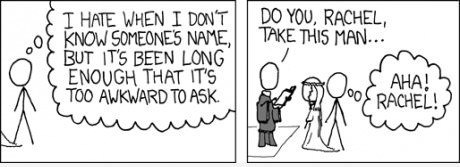
While some people are gifted in remembering names, for others, it’s more of a developed skill. But every new introduction is an opportunity to practice identifying faces, and, as you improve, others will begin to perceive you as a valuable connector in work, in business and in life.
[image error]
You actually can use the below mentioned strategies and practice.
You just need to start slowly, and then increase your list with each new introduction:
Hammer (repeat) names throughout the interaction. Hammering or repetition helps your brain to retain information. As soon as you’re introduced, say, “It’s fantastic to meet you, Beena.” Refer to the person by name upon greeting and then repeat it again in parting.
Create mental associations. Create a visual connection with a person’s name to something memorable in your world – it can be weird as well. For example, if you meet someone named Amrit who happens to be a write, visualize ‘Amrit’ (the nectar) in an ink bottle. The humorous image will save his name and career into your memory folder.
Study names in print. Use your eyes as well like your ears. When someone wears a name tag, for instance, look at the name tag as well as the face to create an association. As soon as you receive a business card, glance at the name and say, “Thank you, John.”
Ask for clarification with difficult names. If a new connection has a name that is difficult to pronounce, simply ask him or her to repeat it. Then say it again yourself for verification. In addition to gaining clarity, the extra effort will be visible and helpful as well.
If you forget a name, address it head on. If you absolutely can’t remember a name, try to offer any information you can remember, such as where the two of you may have met. Alternatively, if you shake hands and introduce yourself, your contact will most likely follow suit.
If you think you know someone’s name, but are unsure, venture a guess: “Anushka, right?” Or you could simply apologize and say, “I’m sorry, I’m a little forgetful at the moment. Please remind me of your name.”
Don’t worry, it happens to everyone.
Victor Ghoshe
07-10-2016


Develop skill to remembering anybody’s Name in 5 steps
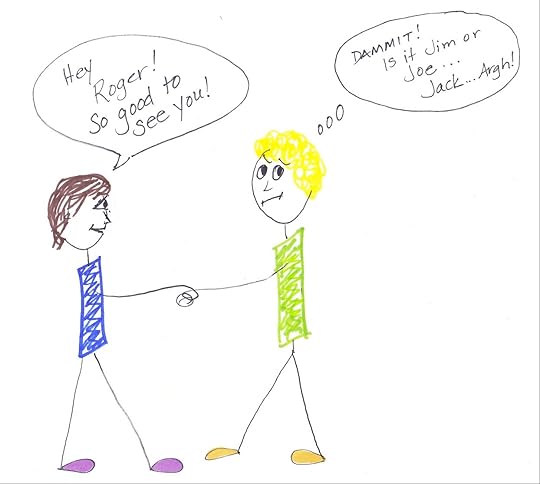
Names are important. Particularly when it comes to building networks, garnering new business contacts. When you remember somebody’s name even after meeting them just briefly it sends the message that you took the interaction seriously and it was important to you. Probably no other skill can make others feel as valued, or open as many doors to new connections.
While some people are gifted in remembering names, for others, it’s more of a developed skill. But every new introduction is an opportunity to practice identifying faces, and, as you improve, others will begin to perceive you as a valuable connector in work, in business and in life.

You actually can use the below mentioned strategies and practice.
You just need to start slowly, and then increase your list with each new introduction:
Hammer (repeat) names throughout the interaction. Hammering or repetition helps your brain to retain information. As soon as you’re introduced, say, “It’s fantastic to meet you, Beena.” Refer to the person by name upon greeting and then repeat it again in parting.
Create mental associations. Create a visual connection with a person’s name to something memorable in your world – it can be weird as well. For example, if you meet someone named Amrit who happens to be a write, visualize ‘Amrit’ (the nectar) in an ink bottle. The humorous image will save his name and career into your memory folder.
Study names in print. Use your eyes as well like your ears. When someone wears a name tag, for instance, look at the name tag as well as the face to create an association. As soon as you receive a business card, glance at the name and say, “Thank you, John.”
Ask for clarification with difficult names. If a new connection has a name that is difficult to pronounce, simply ask him or her to repeat it. Then say it again yourself for verification. In addition to gaining clarity, the extra effort will be visible and helpful as well.
If you forget a name, address it head on. If you absolutely can’t remember a name, try to offer any information you can remember, such as where the two of you may have met. Alternatively, if you shake hands and introduce yourself, your contact will most likely follow suit.
If you think you know someone’s name, but are unsure, venture a guess: “Anushka, right?” Or you could simply apologize and say, “I’m sorry, I’m a little forgetful at the moment. Please remind me of your name.” Don’t worry, it happens to everyone.
Victor Ghoshe
07-10-2016


August 17, 2016
Public Health Service Delivery, Nitish Kumar and that one bidi, I smoked…
Several years back in 2005 at a UNDP knowledge management workshop in Udaipur many of us – Public Health professionals were discussing about channelizing the huge ‘health worker’ resource we have in the name of ‘quacks’ in India (quacks are the millions of unregistered, un trained medical practitioners). It was the month of February and Udaipur was beautiful with a soft bright sun shining gently; tree-swaying-breeze and the temperatures in the twenty degrees along with a very low humidity.
It was primarily a maternal & child health discussion forum and we had over five hundred development professionals and doctors as members in that specific visioning workshop – the third Visioning Workshop of the MCH (maternal & child health) community of Solution Exchange (the knowledge sharing portal) – led by Mr Meghendra Banerjee those days. Along with several other emerging issues related to MCH, like ‘in-accessibility of health centers in rural India’. Issues relating to ‘birth preparedness’ and ‘family planning’ in rural India we also discussed about the quacks at length. With over five hundred top and mid level Public Health honchos and ‘knowledge banks’ the workshop became a treasure trove of downloadable knowledge.
Eleven years later, today I clearly remember that most of the core group members at that workshop all agreed about one easy solution to many of the emerging health issues especially in rural Bihar, Uttar Pradesh, Rajasthan, Madhya Pradesh and West Bengal – was to be able to channelize the available resource of the quacks. Some Bureaucrats had mentioned that the most important problem being – most of the doctors do not even visit their posts in the rural areas; they stay in the cities and visit their stations once a month to collect salary. Even they had agreed – Quacks could be the answer actually. But the problem was – they were not trained.
‘They can be trained – if not as a medical person but as a para-medic.’ Some of us said as it was a simple principle of resource management.
Unfortunately most of the doctors present in the workshop didn’t like the idea then.
July, 2015
My Sunday mornings are for cleaning. First I clean up my mind and then I try the same process for my study – and more often than I know – I fail performing the second task. Now this given day I chose to clean-up my desk. I dug through the piles of papers and scribble pads from the top of it and then somewhere deep down I found this news paper cutting – I didn’t remember when had I done that but I read it and I thanked myself for it anyway.
I held the four by three inch piece of paper in my hand. It was surely from Times of India (because that’s the paper I am given to read at my home). The piece had a headline in clear bold Times New Roman font announcing:
[image error]
‘One year course for quacks announced’
My mind was paused for a couple of moments and then read on….
‘Patna: Bihar Chief Minister Nitish Kumar announced that a one year technical training will be launched for quacks to enable them to get recognized as community health workers. Earlier inaugurating ‘Swasthya Samagam 2015’ an event organised by the medical cell of JD(U). He said this course would help the quacks get a new degree to meet basic medical needs in villages of Bihar.
“As Bihar has a big population and the number of doctors in the state is not sufficient to cater the needs of all, the role of such trained health workers will become important. However, if people build toilets at their homes and avoid going out in the open (for defecation), the need for doctors will be much less.”
“The new course is a joint venture of the national institute of open schooling (NIOS) and Bihar Government. Candidates will be given training at referral units located in every district. The syllabus will include the study of anatomy, physiology, health, sanitation, nutrition, pharmacy, communicable and non- communicable diseases along with basic training to act in medical emergencies,” said the Chief Minister. The degree will help the quacks to work as volunteers under different health schemes.’
‘Wow!’ I told myself – this is something what we talked about several years back and especially this is what I always wanted the government to do – if not the Central Governance the state government could anyway do it. Because through all of these 11 years I have seen things and believed many.
Because, by now I have seen and known many of these people and seen them saving lives. I somehow had developed a faith in these people. I think I have to share one story to end this note….
It was April, 2012 – and I had started fitting into yet another Public Health role among the many that I played. I worked in FHI 360 as the National Manager and found the program was designed to mobilize quacks in rural UP and Gujarat to promote ORS & Zinc as the first line therapy to manage diarrhea among children. We never called them Quacks though – we called them Rural Medical Practitioners. Good enough – for the next two year I visited innumerable RMPs in several villages of UP and Gujarat and learned something new….. what amazing role these guys play in the public health service delivery scene of our country. Had they not been there – innumerable rural communities must have collapsed. They are the people who help communities live; they are the people who actually provide what the government should have provided; they are the ones who help regions survive and yet they are out-caste and get almost nothing.
I remember a village in Unnao District Uttar Pradesh, where on a summer afternoon I waited with my colleague on a bench under a huge banyan tree to talk to the RMP who was busy dressing a little boy’s leg wound which went bad. Suddenly there came a cycle rickshaw and along came three badly injured people – bleeding profusely from different injuries. The rickshaw was followed by another and then another…… within minutes there were fourteen injured people bleeding, groaning on the ground under the tree, in front of the small ‘shop’ of the RMP.
The way most of the men cried and moaned and bled I thought some five-six of them were going to die the very day on that ground for sure. One of the rickshaw-puller said – they were two communities who fought over some little nothing and injured each other with their lathis. I could see that pretty well as some groaning men still carried their lathis – as if they were going to have a second season after the clean-up job. The RMP finished his dressing work, collected his fee, gave the change back to the boy’s father and called up his assistant to put up the bottles.
By then I had forgotten why I was there – I was more interested in what would happen next and how this man would treat all of this badly injured men.
As the assistant boy worked, I – with all my amazement stared as if I watched history occurring in front of my eyes. The boy quickly got several bottles of intravenous fluids arranged and one by one he hung them from different branches of the banyan tree and dragged attached pipes to the groaning people. The RMP followed him – one by one he inserted the IVF niddle in the arms of lying men.
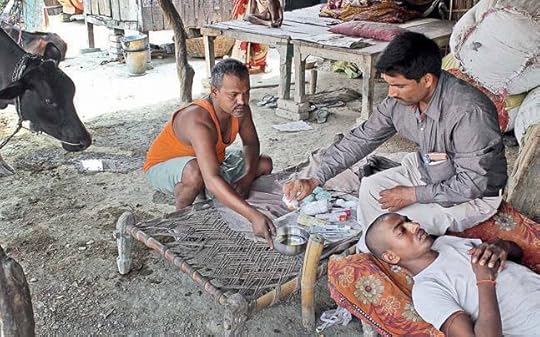
Phase one was done. He stood up straightened his back and asked his assistant to get the BIDIs.
At first I thought – I heard it wrong; but as the assistant actually brought some packs of bidis (cigarettes of rural India) from the shop, I started comprehending the meaning of that one sentence which my grandfather often said – “there are many Indias in one India.” The RMP lighted one Bidi from another and pushed them one by one through the groaning lips of the lying, bloody people.
‘That will help them to think they are feeling better.’ He smiled at me and got cotton balls and a large bottle of antiseptic cleaning agent. He was ready to start his third phase of treatment now.
Starting from the most badly bleeding man he then carefully checked each wound one by one and cleaned and if required stitched.
I wanted to see it all – to be able to tell the story some day to many others– which I am doing right now. I waited for over two hours and witnessed how amazingly, how carefully, how compassionately an untrained person saved so many people from death by sheer loss of blood.
After over two long hours the RMP was done with his fourth phase – which was dressing up the wounds.
Some more minutes later the rickshaw puller re appeared and pulled the men on to their rickshaws and left. None of the men paid anything. As the rickshaws turned at the twisted muddy roads and vanished behind the greenery, I asked – ‘they didn’t pay you?’
Prompt came the reply… ‘Oh! They are all land labourers – they do not have any cash on them… where would they pay from? And they have wasted the day already so they will not even be paid anything for today.’
‘Waise bhi hum nehi karenge toh kaun karega saab…apna hi toh log hai…’ he added (they are all our people after all…. someone has to treat them!)
I looked in his eyes…..and raised my hand almost in oblivion – in a trance, and said… ‘ek Bidi milega…’ –
I asked him, ‘can I have a bidi. Can I have the pleasure of smoking a bidi with you under this tree?’
He said, ‘sure sir, but why?’
I said, ‘to mark and remember what I witnessed this day – till the last day of my life.’
Victor Ghoshe
15th Aug, 2016
Patna, Bihar


July 22, 2016
Bengali Cinema at our backyard & my childhood
Born in the seventies, we had a rather simple childhood.
No gadgets, no fashion accessories, no flashy equipment centric sports and TV was yet another six-seven years away to invade our mind-spaces. I was seven and my sister was six.
On lazy Saturday evenings we would stroll down to Gariahaat market, or to Hazra crossing, or to Bhawanipur market from our Ritchie Road residence (in southern Calcutta) with my aunt and my mother. My father was mostly busy in his world of Gear-box making Allenbury works where he supervised a section – till I was ten. After which he actually took me under his wings and started taking me out to watch every good Hollywood film he wanted me to watch – but that’s a different story.
For those innumerable Saturday escapades both of us would reach out to my mom’s or my aunt’s hand – held them strong and walk towards nothing. No car; no taxi; no expectation; no air conditioned market complex; no food court (even egg, mutton and egg-mutton rolls were yet to be invented and served on the streets of Kolkata) we would just walk with occasional dopes of ice creams or Alu-Kablis or at the best – bites of mutton cutlets on a good day.
On one such mid summer Saturday, strolling down to Bhawanipur from Hazra crossing both my sister and me spotted a film poster written ALIBABA on it in Bengali. My sister asked if it was the same Alibaba and the forty thieves’ story that she knew and my aunt nodded for a yes.
Those were the days when Mr Prakash Mehra was making Khoon Pasina, Mr Manmohan Desai was making Amar Akbar Anthony & Dharam Veer, Gulzaar saab was making Kinara, Mr. Pramod Chakraborty was making Dream Girl, Mr Shyam Benegal was making Bhumika and Ray was making Satranj ki khiladi.
Not a very good time for six-seven year old movie goers by the then standards for sure!
We both made it clear that we would watch Alibaba that evening. We generally were not stubborn kids, so once in a while we were allowed to act differently. The name of the theater was Indira which was located in one of the lanes connecting Bhawanipur and Bel-tala Road and those days tickets were easy available for a Bengali film and even easier for a 1937 Bengali film.
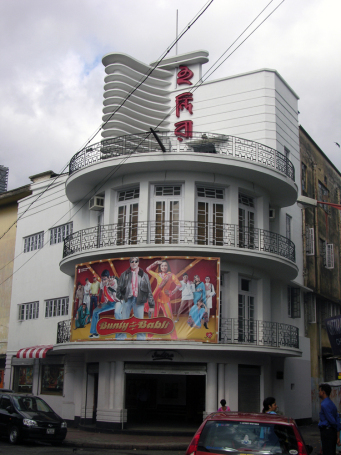
Indira Cinema in 2005
That evening while watching the film I first heard about Sadhona Bose and Modhu Bose from my aunt. They were husband and wife. Sadhona Bose played Marjina and Modhu Bose played Abdallah in the film. Many years have passed but the free flowing acting style of the main actors through scene after scene and a simple narrative are still fresh in my mind as they somehow made a permanent mark in my memory.
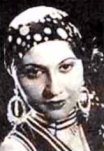
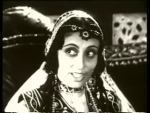
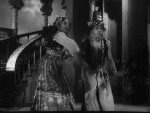
Sadhona Bose and Modhu Bose in Alibaba
I still remember there was no melodrama moment, there was no dramatic dialogues for such an old film and yet it was a beautiful one. Everything in the film including the song and dances went flawlessly smooth.
We both brother and sister loved the film. We didn’t know why we liked such an old film then but today I know that experimental work of director Modhu Bose to use music as the key narrative line of the film was the factor which made that film different from the lot.
Later after my board exams when I took film studies seriously, I visited many libraries and made innumerable notes to understand the progress of Bengali films – not as a scholar but as a keen learner; as a story teller and as a creative mind which always wanted to demystify the similarities and differences; the patterns and contrasts between ‘cinema and performing arts’.
The following note about Modhu Bose and his contribution to Bengali cinema is not taken from any website or from any published document; I only am typing it out from a hand written journal which I compiled some thirty years back from several old books in several dusty libraries. This is my own study and I am happy about the fact that driven by only his own enthusiasm and thirst for knowledge a 16 year old boy did all of these.
“Modhu Bose (1900-69) was born in a very cultured Bengali family and went to Europe to be trained in camera techniques; he worked with Fritz Lang in the twenties in Europe. He came back and directed two silent films in 1930 – both were based on stories by Tagore. But his interest was high in musicals. He made Alibaba in 1937. Based on a popular stage play Alibaba was a new kind of film in Bengali cinema. It was an operatic experiment in which songs and dances were not additional insertions in the cinema but woven in the very texture of its narrative.
Many musical films with several songs or on lives of legendary musicians have been made since. But Modhu Bose’s contribution to Bengali cinema has always stood out in the form of – the musical as a distinct genre. His Alibaba was followed by other musicals like kumkum (1940) and Rajnartaki (1941) along other kinds of films.
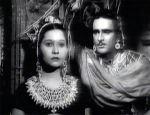
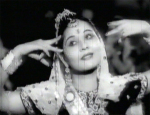
Scenes from Rajnartaki (1941)
In this context a film portal https://memsaabstory.com can be quoted about Rajnartaki. “This is a rare treat from Wadia Movietones. It was the first all-English talkie made in India by an all-Indian cast and crew, directed by Modhu Bose. The ill-fated love story shares a nice message about equality and hypocrisy. It is typically 1940s in its formal, stagey acting and stilted language, but Sadhona Bose is glorious as Court Dancer Indrani and of course Prithviraj is beyond gorgeous himself. The action takes place in early 19th century Manipur and there are brilliant dancing costumes and a wonderful Art Deco feel to it as well. Its a brilliant Musical’.
Along with this kind of path breaking works of Modhu Bose and a few others like Bimal Roy, Pasupati Chatterjee, Jyotish Bannerjee and Satyen Bose, there was a continuous improvement in the equipment (mostly imported) for photography, sound recording, editing and processing. And these talented people made good use of them.
The method of back projection to create the illusion of a moving vehicle was tried out in Bhagyachakra which was as early as 1935. This later was used in a more technical manner from 1940 onwards.
Similarly unlike the indoor-shot Alibaba – outdoor shooting was done in more sequences from 1940 onwards. The strong pull of narrative content necessitated a certain pace which in turn called for fewer interruptions in story telling and more attention to cinematic devices.
As a knowledge management enthusiast I believe it will not be out of place to mention here a fact of some relevance which is not widely known. As early as 1931 Narendra Dev. Girija Basu and Haren Ghosh, all known for their interest in literature and arts, took cinema seriously enough to start a cinema library-cum-film study centre, probably the first of its kind in India. Narendra Dev and Girija Basu later began compiling a history of Indian cinema and undertook translations of books on cinema published in English in the west.
These then were some of the factors responsible for the progress that Bengali cinema had achieved during the thirties and forties.”
Now that I have finished writing this piece which merely started as a childhood memoir, I think it is injustice to not to mention several legendary cinema personalities like KL Saigal, PC Borua, Deboki Bose, Nitin Bose, Sushil Mojumdar and many more, when you write about the development of Bengali Cinema.
I believe I have to come back – divide the eras (the Beginning 1919-30; Achievements and Character development 1931 – 46) and write more stories….. based on my childhood memories, my grown-up film experiences and my relentless study and work on cinema as a subject through three long decades.
Victor Ghoshe
22-07-16


July 19, 2016
At the Human Library, you check out people instead of books…
I was overwhelmed to hear about this concept from a close friend and thought of sharing here in my blog for all my readers.
While some libraries are ditching their books in favor of the laptops, e-readers, and mp3 players, there’s another library idea that believes stories are much better shared when they come from the source. At the Human Library, you actually borrow people.
The concept is simple – instead of checking out a book, you “borrow” a person who has stories to tell gathered from a unique life experience. For half an hour, you can sit down with someone like a prostitute, a politician, a designer, or a religious preacher – all of whom have incredible stories to share.. and unlike a book, they’re able to answer your questions and tailor the storytelling experience to you.
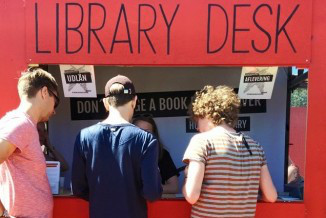
This unique idea of checking out humans started in Denmark in 2000 (by an youth-based nonprofit, Stop The Violence) as a way to curb youth violence, and has since grown into an international project to promote compassion, understanding, and knowledge between people of all kinds. The project has worked so well that some cities have even set up permanent, award-winning libraries. The first US Human Library took place in Santa Monica Public Library in 2009.
The thought is – lets people check out “interactive books” for half an hour–but the words are coming from humans that volunteer to tell their tales.
Readers peruse the library catalogue and select an experience to hear about–Child Of The Holocaust Survivors, The Gypsy Tale, Iraq War Veteran, and Orphanage Boy, are examples of story titles offered.
With library card in hand, readers are led to a discussion area to meet their book and hear the tale, cover to cover.
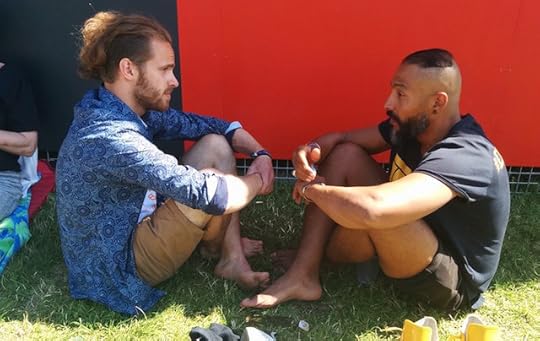
The Human Library was a project intended to start conversation and foster understanding between different types of people that would normally not interact with each other.
“The purpose is to challenge what we think we know about other members of our community,” reads the Human Library Facebook Page. “To challenge our stereotypes and prejudices in a positive framework, where difficult questions are accepted, expected and appreciated.”
The first Human Library event was hosted at the Roskilde Festival in Copenhagen. One of the largest summer festivals in Northern Europe, its theme focused on community activities to help stop growing levels of violence and bias in the area. Now the project has spread to over 70 countries across the world.
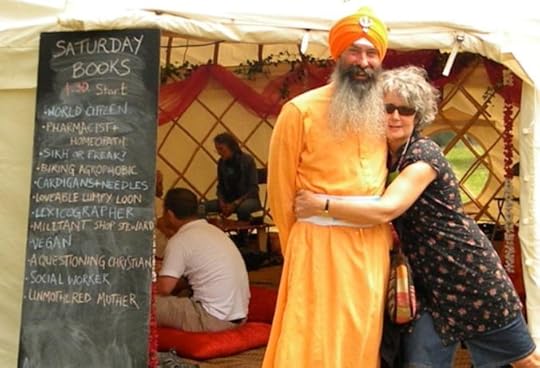
If you feel like you’ve got a bestseller inside you, check out the Human Library http://humanlibrary.org/ to see if there are events happening near you–with no late fees involved.
Victor Ghoshe
20-07-2016
Photo Courtesy: goodnewsnetwork.org; yongestreetmedia; roadtrippers.kinja.com


At the Human Library, you check out people instead of books & aim to foster diversity
I was overwhelmed to hear about this concept from a close friend and thought of sharing here in my blog for all my readers.
While some libraries are ditching their books in favor of the laptops, e-readers, and mp3 players, there’s another library idea that believes stories are much better shared when they come from the source. At the Human Library, you actually borrow people.
The concept is simple – instead of checking out a book, you “borrow” a person who has stories to tell gathered from a unique life experience. For half an hour, you can sit down with someone like a prostitute, a politician, a designer, or a religious preacher – all of whom have incredible stories to share.. and unlike a book, they’re able to answer your questions and tailor the storytelling experience to you.

This unique idea of checking out humans started in Denmark in 2000 (by an youth-based nonprofit, Stop The Violence) as a way to curb youth violence, and has since grown into an international project to promote compassion, understanding, and knowledge between people of all kinds. The project has worked so well that some cities have even set up permanent, award-winning libraries. The first US Human Library took place in Santa Monica Public Library in 2009.
The thought is – lets people check out “interactive books” for half an hour–but the words are coming from humans that volunteer to tell their tales.
Readers peruse the library catalogue and select an experience to hear about–Child Of The Holocaust Survivors, The Gypsy Tale, Iraq War Veteran, and Orphanage Boy, are examples of story titles offered.
With library card in hand, readers are led to a discussion area to meet their book and hear the tale, cover to cover.

The Human Library was a project intended to start conversation and foster understanding between different types of people that would normally not interact with each other.
“The purpose is to challenge what we think we know about other members of our community,” reads the Human Library Facebook Page. “To challenge our stereotypes and prejudices in a positive framework, where difficult questions are accepted, expected and appreciated.”
The first Human Library event was hosted at the Roskilde Festival in Copenhagen. One of the largest summer festivals in Northern Europe, its theme focused on community activities to help stop growing levels of violence and bias in the area. Now the project has spread to over 70 countries across the world.

If you feel like you’ve got a bestseller inside you, check out the Human Library http://humanlibrary.org/ to see if there are events happening near you–with no late fees involved.
Victor Ghoshe
20-07-2016
Photo Courtesy: goodnewsnetwork.org; yongestreetmedia; roadtrippers.kinja.com


June 28, 2016
Anything can bring up an old memory – even if it’s just a BBC headline
“Spaghetti western star Bud Spencer dies”
The BBC Headline was a well defined ‘pause’ for my mind. Then the pause morphed into a momentary vision….. and then I lived a time long lost…..
I was an eight year old boy once again.
I was getting ready for school around nine thirty in the morning when my father appeared in the old mirror behind me. It was an off day for baba and more importantly it was a Friday.
“Anything important in school today, Babu?” he asked touching my shoulder.
Standard eight; Co-education school….with nine girls in the section….
“Of course there are so many interesting…. I mean Important things in school today dad; there’s an exam also!”
“You know, babu! Exams will come and go…. but this film might not be showing again…!”
For people who joined later – in 1984 video cassettes didn’t bombard middle class households; DVDs was to hit the markets yet another 16 years later and the only environment available for the cinema-hungry minds were – the theaters.
“Which film?” I asked in two minds….. “school is good but how many kids have a father who would push his child to bunk school on account of watching a film!”
“Its called – They call me Trinity. And it’s a western one with Terence Hill and Bud Spencer.” He added.
Now, that was really something for me!
Because influenced by my dear father…. by that age I was already a huge fan of the Cowboys and Western movies. Supported by him I had already developed a great collection of Cowboy books and western comics and I had my cricket hat converted into a Cowboy hat with twisted edges and with a nice dark ribbon tied around – which had turned into a reason for envy for many of the boys in my Para (locality).
Well, I bunked school that day and by default I also had bunked the maths exam. Baba and me – we headed for Purna Cinema in the Bhawanipur – Ghadimore area; on the way baba talked a lot about why They call me Trinity was a different kind of a western film – he briefed me about ‘Italian Western films’ and how this genre has added humour to mainstream Hollywood Western films.
We enjoyed a really funny Western with Hill – the man with the bluest eyes ever seen on screen and Bud – the huge man with a poker face yet was funnier than Hill. Along with the film we had also enjoyed lots of potato chips and a forgotten cold drink named Campa Cola.
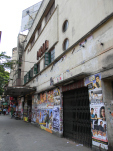
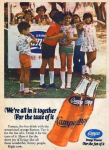
Today I have lost counts – how many times I have thanked my dad through the last 30 years of my grown up life, for the philosophy that he had shared with me that day. “Do things what you wish to do babu….. never feel any pressure from anyone or anything – always be a free man, with a free mind.”
Today – with this news of Bud, and while writing this memoir I once again thank him for making me the free man that I always have been.
Coming back to the film and to Bud…
They call me Trinity- the film was about a drifter, who comes to a town where his brother is sheriff. His brother is actually a robber who broke the real sheriff’s leg and became sheriff in order to hide out. They team up against the local land baron who is trying to get rid of the Mormon settlers in a valley he wishes to own.
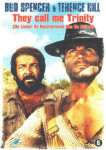
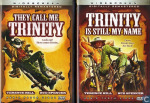

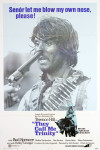
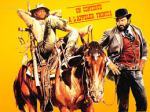
Later with the digital and virtual era bringing the world closer – I actually bought the other Hill & Bud movies from the same Genre and watched. After the success of They call me Trinity they made a sequel, (1971), which was soon proved to be an even bigger success. Terence Hill and Bud Spencer paired up in over a dozen other films, using the formula of brawls and jokes established in They call me Trinity. Several of Hill’s and Spencer’s Westerns made prior to Trinity were re-released in the United States to take advantage of their popularity, with Boot Hill (1969) renamed as Trinity Rides Again.
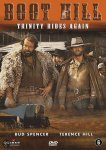
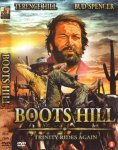
I have watched almost 85 % of all the good western films till date but I still remember They Call Me Trinity – for “Trinity’s” delightful ending. Posing as lawmen Hill and Spencer, decided to defend a band of Mormons who were threatened by the evil Maj. Harriman (played by Farley Granger). But they tossed aside their guns, which was heresy in an Italian Western, and beat up the bad guys with their fists. And the fight was so highly stylized that it looked like a cross between the big production number in “Seven Brides for Seven Brothers” (this film was a ready reference in my mind then) and a funny Laurel and Hardy sequence. Later, when I read that Italian Western audiences would traditionally laugh at the violence, I knew why I liked and enjoyed that sequence so much in the film.
The BBC report that made me write this memoir (might help people who want to know more about Bud):
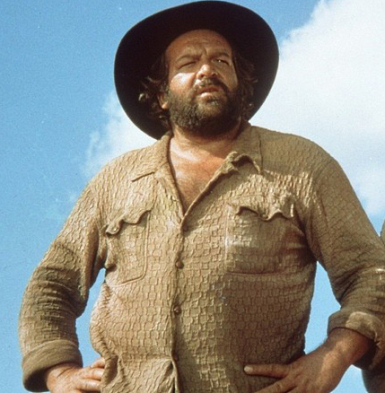
“Italian actor and filmmaker Bud Spencer, who starred in a number of Spaghetti Westerns, has died aged 86.
He passed away peacefully on Monday in Rome “and did not suffer from pain”, his son said.
Spencer, whose real name was Carlo Pedersoli, was known among his fans as the “big friendly giant” of the screen because of his height and weight.
Spencer, who was also a professional swimmer, played in more than 20 films from the 1950s to the 1980s.
“He had all of us next to him and his last words were ‘Thank you’,” his son Giuseppe Pedersoli said.
Italian Prime Minister Matteo Renzi tweeted: “Ciao #BudSpencer We loved you so much.”
Spencer was born in the southern Italian city of Naples in 1929, but later moved to Rome, where he became a promising swimmer. In 1950, he was the first Italian to swim 100m in under one minute. He later abandoned his sporting career and began playing in westerns and comedy films, often alongside Terence Hill (born Mario Girotti; born in 1939, Venice, Italy).
Spencer appeared in movies including Ace High, the Trinity trilogy and A friend is a treasure.
He once said he chose his name as a tribute to his favourite beer Budweiser and US actor Spencer Tracy.” BBC News
I thank BBC for covering the news and my friend Raja Dasgupta – for posting it on Face book to bring it to my notice and allowing me to spent some happy-strolling down memory lane remembering Bud and re-living priceless moments with my dad in the enchanting eighties.
Victor Ghoshe
28 Jun, 2016


Anything can bring up an old memory – even if its just a BBC headline
“Spaghetti western star Bud Spencer dies”
The BBC Headline was a well defined ‘pause’ for my mind. Then the pause morphed into a momentary vision….. and then I lived a time long lost…..
I was an eight year old boy once again.
I was getting ready for school around nine thirty in the morning when my father appeared in the old mirror behind me. It was an off day for baba and more importantly it was a Friday.
“Anything important in school today, Babu?” he asked touching my shoulder.
Standard eight; Co-education school….with nine girls in the section….
“Of course there are so many interesting…. I mean Important things in school today dad; there’s an exam also!”
“You know, babu! Exams will come and go…. but this film might not be showing again…!”
For people who joined later – in 1984 video cassettes didn’t bombard middle class households; DVDs was to hit the markets yet another 16 years later and the only environment available for the cinema-hungry minds were – the theaters.
“Which film?” I asked in two minds….. “school is good but how many kids have a father who would push his child to bunk school on account of watching a film!”
“Its called – They call me Trinity. And it’s a western one with Terence Hill and Bud Spencer.” He added.
Now, that was really something for me!
Because influenced by my dear father…. by that age I was already a huge fan of the Cowboys and Western movies. Supported by him I had already developed a great collection of Cowboy books and western comics and I had my cricket hat converted into a Cowboy hat with twisted edges and with a nice dark ribbon tied around – which had turned into a reason for envy for many of boys in the Para (locality).
Well, I bunked school that day and by default I also had bunked the maths exam. Baba and me – we headed for Purna Cinema in the Bhawanipur – Ghadimore, and enjoyed a funny Western with lots of potato chips and a forgotten cold drink named Campa Cola.


Now I have lost counts – how many times I have thanked my dad through the last 30 years of my grown up life, for the philosophy that he had shared with me on that special day. “Do things what you wish to do babu….. never feel any pressure from anyone or anything – always be a free man with a free mind.”
Today – with this unexpected opportunity – I thank him once again for making me the free man that I am today. Coming back to the film and to Bud…
They call me Trinity
The film was about a drifter, who comes to a town where his brother is sheriff. His brother is actually a robber who broke the real sheriff’s leg and became sheriff in order to hide out. They team up against the local land baron who is trying to get rid of the Mormon settlers in a valley he wishes to own.





Later with the digital and virtual era bringing the world closer – I actually bought the other Hill & Bud movies from the same Genre and watched. After the success of They call me Trinity they made a sequel, (1971), which was soon proved to be an even bigger success. Terence Hill and Bud Spencer paired up in over a dozen other films, using the formula of brawls and jokes established in They call me Trinity. Several of Hill’s and Spencer’s Westerns made prior to Trinity were re-released in the United States to take advantage of their popularity, with Boot Hill (1969) renamed as Trinity Rides Again.


I have watched almost 85 % of all the good western films till date but I still remember They Call Me Trinity – for “Trinity’s” delightful ending. Posing as lawmen Hill and Spencer, decided to defend a band of Mormons who were threatened by the evil Maj. Harriman (played by Farley Granger). But they tossed aside their guns, which was heresy in an Italian Western, and beat up the bad guys with their fists. And the fight was so highly stylized that it looked like a cross between the big production number in “Seven Brides for Seven Brothers” (this film was a ready reference in my mind then) and funny Laurel and Hardy sequence. Later, when I read that Italian Western audiences would traditionally laugh at the violence, I knew why I liked that sequence so much in that film.
The BBC report that made me write this note (might help people who want to know more about Bud):

“Italian actor and filmmaker Bud Spencer, who starred in a number of Spaghetti Westerns, has died aged 86.
He passed away peacefully on Monday in Rome “and did not suffer from pain”, his son said.
Spencer, whose real name was Carlo Pedersoli, was known among his fans as the “big friendly giant” of the screen because of his height and weight.
Spencer, who was also a professional swimmer, played in more than 20 films from the 1950s to the 1980s.
“He had all of us next to him and his last words were ‘Thank you’,” his son Giuseppe Pedersoli said.
Italian Prime Minister Matteo Renzi tweeted: “Ciao #BudSpencer We loved you so much.”
Spencer was born in the southern Italian city of Naples in 1929, but later moved to Rome, where he became a promising swimmer. In 1950, he was the first Italian to swim 100m in under one minute. He later abandoned his sporting career and began playing in westerns and comedy films, often alongside Terence Hill (born Mario Girotti; born in 1939, Venice, Italy).
Spencer appeared in movies including Ace High, the Trinity trilogy and A Friend is a Treasure.
He once said he chose his name as a tribute to his favourite beer Budweiser and US actor Spencer Tracy.” BBC News
I thank BBC for covering the news and my friend Raja Dasgupta – for posting it on Face book to bring it to my notice and allowing me to spent some happy-strolling down memory lane remembering Bud and re-living priceless moments with my dad in the enchanting eighties.
Victor Ghoshe
28 Jun, 2016


June 15, 2016
Babu, Nabi Karim and Chicken Changezi
Babu
When I met Babu he was a 23 year old boy with one wife and 4 children from the Nabi Karim area in New Delhi. He was 5.4; he was very dark with a shining smile and he was thin.
It was 2003 or 2004, I was still heading some creative departments in some really big advertising house in Delhi (Mudra Communications for the ones who want to know) and was still dreaming of a career shift.
Babu was a freelance production chap with great resource connections in his line or in any line for god’s sake. He was a hard working young man whom you could even ask for Hippopotamus meat in two hours time and without blinking his eyes he would promise you to deliver within three hours – without even knowing what he was committing. But on a good day he would actually make wonders and deliver things that you thought was impossible.
I know about an instance where some big shot in Guwahati had to erect an amusement park with all its rides and frills in two months time under some government pressure. He didn’t want to spend a lot of money on it… as he had to run it only for a few months, until he recovered his due payment form the government. Someone connected him with Babu….. the legend that is popular in some Delhi circuits goes: that Babu had nudged his connections and arranged an unbelievable bargain for this businessman.
What was the bargain?
He got him to buy almost half the rides of by-then-closed AppuGhar in Delhi. And that too for the price of junks as the Delhi Govt didn’t know what to do with them. Now the story doesn’t end here –Babu got this humongous Cargo delivered in Guwahati within a month and then got everything repaired and made that park running in two more months (sticking to his normal +1 unit of extra time).
Well, I know this to be a true one – the rest is up-to you to believe it.
Nabi Karim and Chicken Changezi
As I have recently decided to write about my encounters with delicious foods, I also have decided to write about the amazing people I have met in my life. So this one is about Babu and about a dish named Chicken Changezi from the by-lanes of Navi Karim in old Delhi.
Babu had introduced me to the Nabi Karim area and to Chicken Changezi on an unavoidable trip to the lanes of Pahargunj in old Delhi. I had to supervise a fabrication work for one of my INCREDIBLE INDIA campaigns and I had to accompany Babu who was coordinating things. When we finished our work with the fabricator in a Pahargunj alley it was close to midnight. Babu requested me to have some food and then start for home. With my tired body and soul that moment what I needed was a warm water shower, some good food and SLEEP. I refused.

Babu immediately started his motor bike and eye-gestured me to hop on for a lift up-to the far off parking lot where my driver was waiting. I was happy that Babu didn’t argue at all…
Babu’s motor-bike took twists and turns through the alleys no wider than the bike itself and then he killed the engine and asked me to follow him. I didn’t react and did what he wanted. The area was mostly dark by then and in no time the lane became narrower than one I could think of. We were walking like men in Egyptian paintings to pass through the narrower bottlenecks.
’These are the in-famous Alleys of Nabi Karim – Sir,’ Babu whispered in his Rajasthani Hindi (I forgot to mention, he was actually from Jaipur in Rajasthan).
I kept quite….. I knew him to be a good man until he finished his second bottle in the night, but then again I was worried in my mind. I knew he was only taking me to the food joint against my will – and not to the parking lot, but I was still worried…. as I never had dreamt of roaming in the lanes of Nabi Karim this late in the night.
Suddenly a bottle neck widened into a well-lit opening and there were people and there were 2-3 food stalls – all with large iron tavas on whooshing stoves, and people with long iron spatulas constantly working on a semi-liquid substance on the tavas. I concentrated on the closest stall.
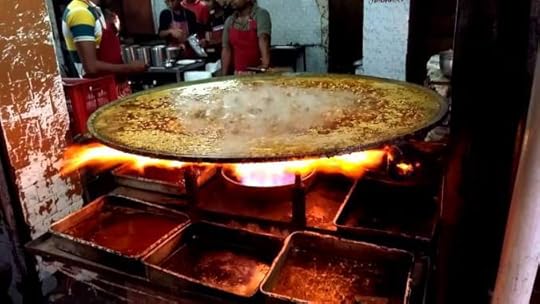
Whatever was being cooked on the tava, the aroma that oozed was fantastic. At least I never had encountered that good a smell from any street food, anywhere.
I keenly observed the stall. You don’t enter anywhere. No tables, no chairs – as no one was expected to sit. It looked like they pride themselves for their food and that was what they were focusing on. I refocused.
There was no menu card as the only offering was Chicken Changezi – you could ask for Tava rotis, Tanduri rotis, Khameeri Rotis or Naans as per a hand written board that dangled in the mid night breeze – but they didn’t make any of them.
As you ordered your choice, the ‘chotu’ of the shop would run down yet another narrow alley to source them from some nearby muslim dhaba.
They keep things simple.
Babu and I had to wait as there were people already waiting. People from different classes, but with the same interest in the dish served. By this time I was interested in the whole experience and wanted to absorb things like a sponge. I did the only thing I was good at.
I observed.
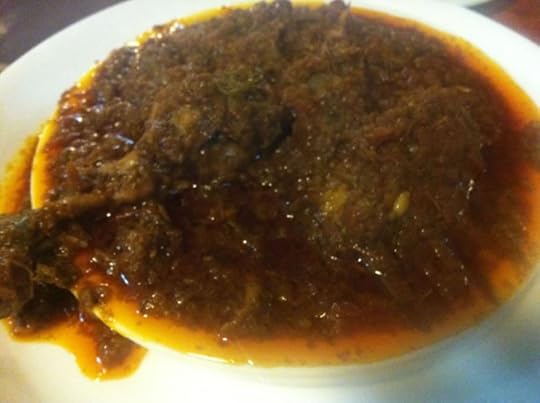
It seemed, Chicken Changezi was a dish consisting of grilled chicken pieces (which have been marinated in lime juice and spices and already was half grilled) cooked on the tava in a burnt amber coloured gravy. And as a food enthusiast I figured the magic of the dish lies in the size of the tava (which was around four feet in diameter); continuous heat and constant arm movement with the spatula on it with an astonishing skill of a gymnast.
Our turn came and we were served on simple steel plates. Our rotis reached and we started. By then I was absolutely an insider to the place – I almost had started belonging there. We ate. None of us talked until we both finished our first servings. Then ordered our next.
I could say it was a taste to be acquired, and which could only be acquired by the second serving – by the fourth portion of the morsel. Initially through the first serving, you find it a little sour and tangy but then it grows on you and well by the end; you discover it to be a very good change from the regular chicken dishes that you find.
People were polite and talked less as they also were cooking with magical skill. The food was the king there in those alleys and the midnight queues said it all.
The curry was spicy and the chicken pieces were soft and delicate…but above all, for me what worked was the raw environment. Today when I look back – I am sure the night and Babu’s company also had added a lot to the taste.
Babu will always remain in my mind as long as I remember this amazing dish called Chicken Changezi or will it be the other way round….. I don’t care – I have already told you the story.
But before I call it a story and sign off, I should mention this trivia – Babu had this funny way of introducing himself as Babu bhai…. with a pause in between ‘Babu’ and ‘babu bhai’ with an uncanny similarity with the way James Bond introduces himself. It was so fascinating, I had developed a character (with the same name) in my book – The Job Charnock Riddle…. and many people actually have liked him.
Victor Ghoshe
15 June, 2016


June 8, 2016
The Bun Maska that waited for a decade….
The Mava cake and the Chicken Dhansak, the Bun Maska and the Jam Puffs, the Bread Pudding and the Irani Chai have their own clientele. While the Iranian cafes in Mumbai is reducing in numbers, some of them still hold their ground strong, only because of the great quality and taste of the food they offer.
I remember an August afternoon in 1996, I stood in front of such a restaurant at the Horniman Circle with my childhood friend Sujan Guha Chaudhury. That was the first time I was visiting Mumbai. Sujan had a relative staying in Chembur and his father was a senior engineer on an offshore, oil rig in Bombay high. We were on a month long trip to Mumbai – Bombay high – Goa – Pune – Ahmedabad with a good amount of stopovers in Mumbai.
That afternoon I had experienced a quick Mumbai shower for the first time in my life and almost tasted the romantic Mumbai rain which by then I only had seen in Basu Chatterjee films. We had many things to do….many places to see; but that afternoon in my well-drenched clothing all I wanted was to enter that Iranian Cafe and to have a Bun Maska with Chai.
I couldn’t. As my friend was not much in the mood of Chai and we had a tour-list to ‘tick’ and finish.
Many years later – on another mid-May afternoon in 2006; standing on the Horniman Circle, behind Bombay Stock Exchange once again I remembered that decade-old wish. The geography of the locality was changed with new construction works around and so did my companion. This time I stood with a senior colleague of mine from my advertising field who knew the area well.
We entered a nice well-lit Iranian cafe….. heavens must have opened windows to throw flowers and rang soothing bells….. and the rest became history in my mind. That day I had Mutton Dhansak, Mava cake and Irani Chai. The Bun Maska I packed for dinner.
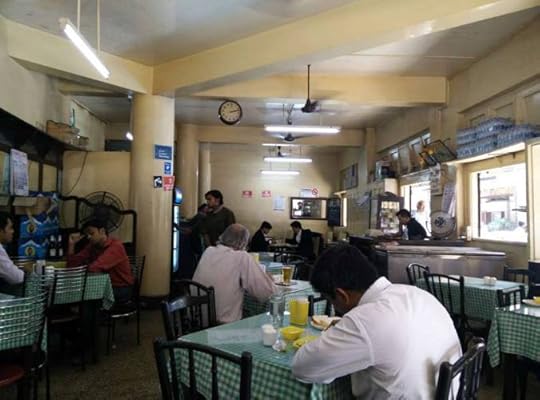
Yet another decade later, seating in my Patna office today as I write this small piece – all I want, is to visit that cafe; eat my heart out and finally after many hours when I sign off from the cafe I want to kiss the hands of that old gentleman at the older-looking, wooden counter; whom I met ten years ago. I do not care whether that cafe still stands at that corner or not… I do not care whether that old gentleman still mans the counter or not….. but today I want to kiss those wrinkled hands for sure.
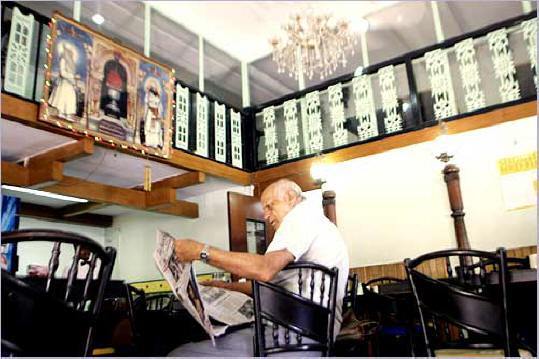
Because that was what I wished to do the last time I visited the place… and couldn’t do it – as I thought it would not be proper. But today seating in Patna – thinking about the great food and that amazing charm of the place, I really do not care…. what is proper and what is not…..! I want to show my respect to the man for the happiness that I had encountered eating in a place that he had built.
Well that’s a sudden adrenaline rush – a sudden flood of memories for me… and for other emotional fools like me, here’s a look at some of the most popular Iranian restaurants in Mumbai. Some of the places still offer the mutton dhansak and the mava cake that I can vouch for. But then again – you can always try the Chicken Biryani, Kheema Sali or the Caramel Custard…. to please your soul.
If you are at Jimmy Boy (Vikas Building, 11 Bank Street, Off Horniman Circle, Fort) – you can surely try Salli Par Eedu or Chicken Dhansak or Chicken Jardaloo or Patra Ni Macchhi or Berry Pulav….

If you are at the Café Excelsior (23, AK Nayak Marg, Opposite New Excelsior Cinema, Fort) which has the required typical ambience for Iranian cuisine. This place has everything you can ask for. You must try the Kheema Pav, Veg Dhansak, Mutton Cutlet, and Caramel Custard. If you have a friend and need to spend some hours you can simply order Chai and Bun Maska and spend hours together.
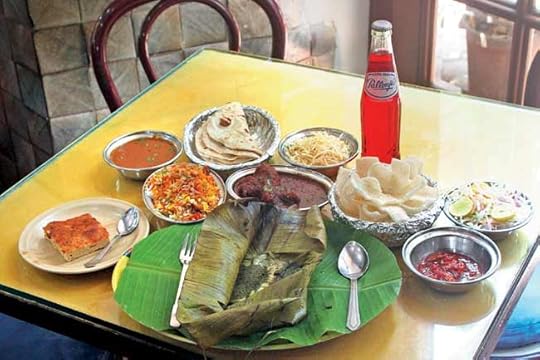
You can try to find out Britannia & Co (11 Sprott Road, Ballard Estate, Opposite New Customs House, Fort) – Since 1923 they have been casting their spell on the passionate patrons. The service is quick, food is tasty and the ambience is totally Irani. You must have their elaichi-laden Irani chai and delicious bun maska. You should try Mutton/Chicken Berry Pulav, Veg Dhansak, Sali Boti & Caramel Custard.
Then there is B Merwan & Co (Ali Bhai Remji Road, Opposite Station, Grant Road East), Situated right outside Grant Road station, this joint is crowded almost for the entire day. The old ambience and furniture takes you back in time. Iranian tea and the mava cake absolutely cannot be missed.
There is one Koolar & Co (541, Noor Mahal, Dr Babasaheb Ambedkar Road, Kings Circle, Matunga) – The ambience will take you back a few eras and put you in the right mood to enjoy an Iranian meal. This joint is known for the classic Kheema Pav. You must also try the Maggie Noodles Masala, Veg Puff, Brun Butter.
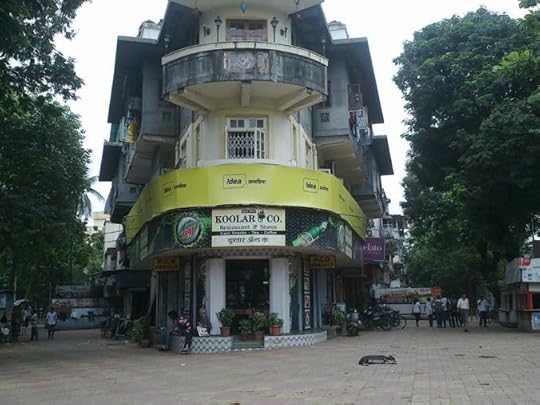
And you have Café Leopold (S.B. Singh Road, Colaba Causeway), established in 1871. Leopold Cafe is almost synonymous with the city. It is a one-stop destination for everyone in the Colaba Causeway area. It is popular not just for the Iranian cuisine but also for the Chinese and Continental. It is also known for its beer towers priced at Rs 300.
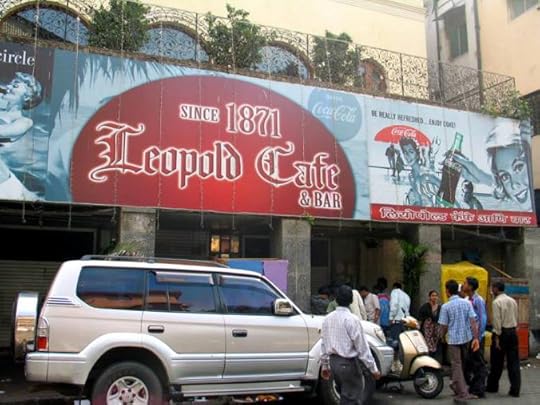
On the Gunbow Street you find Ideal Corner (12 F/G, Hornby View, Gunbow Street, Fort, Mumbai), established in 1985, the ambience at Ideal is more modern and posh compared to the others. Given the location, it attracts a lot of people through the day. You must try the Mutton Dhansak, Mutton Salli Boti, Prawns Curry Rice and ofcourse do not miss the yummy Bread Pudding.
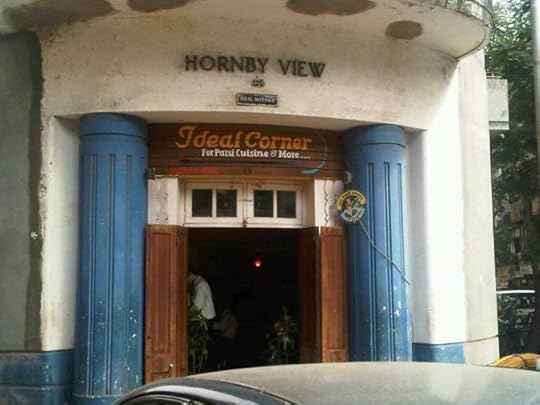
Yazdani Bakery Restaurant stands on – Fountain Akbar Ally, Saint Thomas Cathedral, Fort, Mumbai. This is probably the only traditional Iranian bakery left in the city. Their morning tea along with bun maska, mawa cake or vegetable puff will leave you satiated for the entire day. However, you must not leave without possibly the best Apple Pie ever.
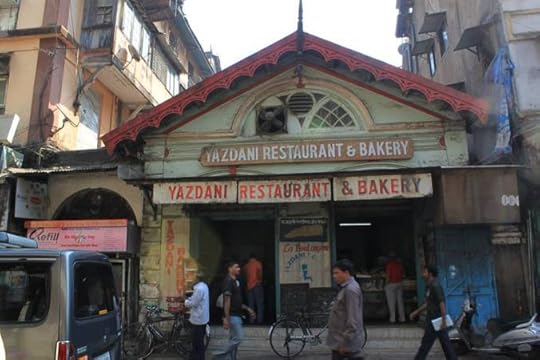
And then there is Cafe Military (Behind Bombay Stock Exchange, Horniman Circle, Opposite HSBC Bank, Fort, Mumbai), very few places capture the charm of the good old Mumbai and Cafe Military is one of them. It’s nothing like your everyday banal restaurant. It has it’s own different swagger and a cult following!
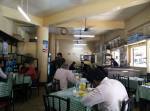


Located next to the BSE in a very narrow lane, you can consider yourself extremely lucky if you find a parking spot. Else you might have to park on the main road. The moment you enter, you sense the Irani cafe atmosphere. Tables are the typical circular wooden ones with checkered stripes. The decor is almost half a century old and may not suit to everyone’s taste.

You can order the famous Kheema Pao and Sali Boti at any time of the day, Caramel custard and the customary Pallonji Raspberry soda will finally make you think where on earth you have been till now. The bread is made by them, so its fresh and extremely soft. The mutton is always perfect. You’ll never feel it under cooked or raw. The best Sali Boti you’ll ever eat is at this place. Its the winner! Custard too is always well prepared and finger licking good.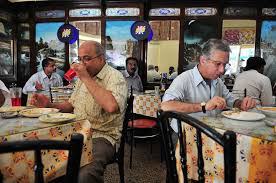
and of course if its an afternoon in the month of May (or in any damn month for that matter), never forget the beer as that’s the USP of the place: Cheap beer! They used to sell Khajurao beer which is extremely rare but they have now discontinued it. Other than that, all the regular ones are available. Go happy Boy !
Victor Ghoshe
08 June, 2016





